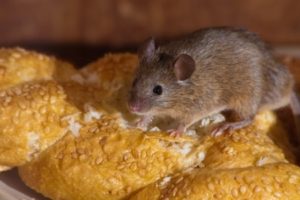 In the fall and winter months, rodents, like the house mouse, are looking for a safe place to spend the winter. Since these mammals are commensal, they rely on humans to help them survive. When they find their way into our homes they will look for a safe and undisturbed place to build their nest. Believe it or not, mice will hide just about anywhere inside your home, including in: Attics, basements, closets, car trunks or under the hood, inside walls, storage boxes, wood piles and any other undisturbed areas. These hiding places can be categorized into two, Outdoor Hiding Spots and Indoor Hiding Spots.
In the fall and winter months, rodents, like the house mouse, are looking for a safe place to spend the winter. Since these mammals are commensal, they rely on humans to help them survive. When they find their way into our homes they will look for a safe and undisturbed place to build their nest. Believe it or not, mice will hide just about anywhere inside your home, including in: Attics, basements, closets, car trunks or under the hood, inside walls, storage boxes, wood piles and any other undisturbed areas. These hiding places can be categorized into two, Outdoor Hiding Spots and Indoor Hiding Spots.
Outdoor Hiding Spots (Underground and Higher Locations)
• Underground
Rats can be found living outdoors in a wide array of habitats. They’re usually big on underground burrowing. Some of them reside in small openings below homes. Others set up residence under stones, high grass and bushes in yards. Rats also often hide out below heaps of wood, as long as the wood is mostly ignored. Many rats make their burrows right next to gates, outhouses and terraces. Some of the burrows they inhabit are as far down as 18 inches in the dirt.
• Higher Locations
While it’s common for rats to live in low locations, not all of them do. Black rats, or roof rats (Rattus rattus), for example, usually prefer to hide out and rest away from the ground. Many of them scout out nesting locales up in trees. Many of them reside in the upper portions of man-made buildings, as well — think attics of two-story homes.
Indoor Hiding Spots
Just when you think the cold weather has driven all the pests away, you notice rodent droppings in your pantry. Although at first, they may look like grains of dark brown rice, these tell-tale signs are not nearly as innocuous as they may seem. Rodent droppings can actually contaminate your food and spread diseases to you and your family members and if you are seeing these signs of rodents in your home, you are probably dealing with an infestation.
If you’re concerned that rats might be hiding out inside of your home, make a point to look in all of the key spots. Areas in the middle of walls, cramped basements and crawl spaces are all favorite rat hideaways. They also like to hang out in tight and narrow spaces such as those below and in the back of closets, cabinets and tubs. Some of them even hide out in empty drawers.
After their nest has been built, these furry creatures will begin to forage for food. They will look everywhere in your home for crumbs, including: in your cupboards, behind appliances, in the bags that pet food is stored in and in areas of high moisture. When rodents forage, they tend to follow the same trail; especially once it has proved fruitful in the search for food. When following the same track, they tend to leave ‘smear’ marks along walls as the grease from their fur rubs off onto their beaten path. You may also find mice droppings in areas where mice have been feeding.
As soon as you identify a rodent problem in your home, it is best to call in the Pest control professionals to handle it. Not only will they help identify areas of infestation, but they can eliminate the pests once and for all and also offer recommendations for environmental modifications that may be necessary to keep these pests from returning to your home.

